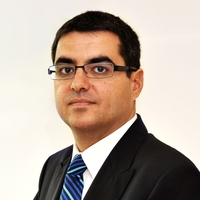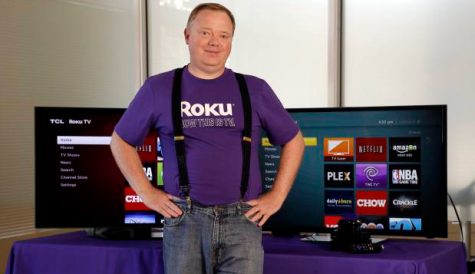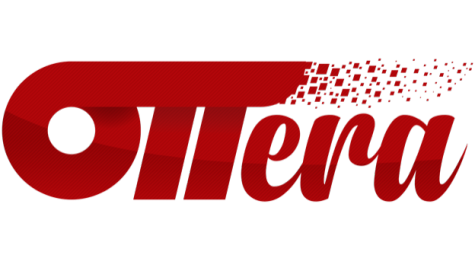Interview: Yves Padrines, Cisco Systems
Yves Padrines, vice-president, cable media & video EMEAR at Cisco, talks to DTVE’s Stuart Thomson about the evolution of cable as it addresses growing demand for broadband and OTT video.
The convergence of video services with broadband platforms and the need to invest in technologies that underpin that shift are among the major concerns of both service providers and their suppliers at the moment.
In the cable world the specific technologies that are currently attracting attention are DOCSIS 3.1 – which will extend the life of operators’ existing HFC infrastructure and enable them to steal a march on rivals in the delivery of ultra-fast broadband – and RDK, the standardised software bundle that is designed to enable the delivery of advanced TV services and allow operators to keep up with the speed of innovation in the user experience that is currently seen in the OTT TV world.
As a leading industry technology supplier in both broadband and TV, Cisco is well-placed to identify the emerging points of convergence between the two. On the broadband side, the company began commercialising its new cBR-8 CCAP-based, DOCSIS 3.1-ready cable platform in April and revealed that Altice, owner of cable operators including France’s Numericable-SFR and Israel’s Hot, and Comcast were among the first customers for the product.
Cisco describes the cBR-8 as a hub-in-a-box, integrating all the previously standalone functions required of a cable hub. The company claims it can enable savings of over 40% of capital and operating expenses over five years, compared to other CCAP platforms, and that the platform can deliver internet access speeds up to 10Gbps.
Cisco says that the cBR-8, which will be demonstrated at ANGA COM next month, will be the cornerstone of its multi-access cable portfolio.
According to Yves Padrines, vice-president, cable media & video EMEAR at Cisco, the company expects 2016 to be a big year for DOCSIS 3.1.
While CCAP platforms, including the cBR-8, are ready, says Padrines, it will be take a little time before chipsets are ready for EMTAs and cable modems.
The cloud and the set-top
EMTAs and cable modems are, along with set-top boxes, among the major investments cable operators have to make to deliver services to their subscribers. While the broadband gateway is seen as a technology that operators will likely deploy in increasing numbers, the future of investment in the TV set-top box has been thrown into a certain amount of doubt by the emergence of cloud-based solutions for advanced services.
For all the current buzz around virtualisation and cloud-based delivery, Padrines says that Cisco believes the set-top box is likely to be around for some time. “Set-tops are not dead yet. There will still be a box in the home to provide internet access and distribute content, whether it is a set-top or a home gateway and whether it is headless or headed,” he says.
Vodafone-owned Kabel Deutschland earlier this year selected Cisco to provide an end-to-end cloud-based advanced TV platform, including client software, content protection technology and set-top hardware.
“All the solutions Cisco is currently proposing are based on RDK. We are trying to have as thin as possible a software client and to have as much intelligence in the cloud as possible even where there is a DVR hard drive,” says Padrines. While cloud-based DVR is not possible in Germany for regulatory reasons, Cisco will try to implement as much functionality in the cloud as possible, including DVR functions such as conflict management.
Padrines says the technology choices being made vary from operator to operator and from country to country, depending on the regulatory situation regarding cloud DVR. In Portugal, for example, pay TV operator Nos, for which Cisco provides the Iris advanced TV service, is no longer deploying DVRs and is relaying on a network solution.
Padrines says that Cisco is also in the process of delivering a next-generation platform for a yet-to-be-named western European operator that will include the deployment both of a cloud DVR solution and hard drive-based set-top boxes. The company can also provide RDK solutions for telecom service providers, and is receiving interest in that, he says. Its ability to deliver an Android-based platform can support an alternative telco TV strategy. Whether operators are willing to sign up with Google for an Android-based platform depends on how concerned they are about keeping strict control of their own customer data, but all operators need to support Android in the mobile domain.
Typically, says Padrines, operators are looking to control the primary device in the home and leave the rest to consumer electronics providers.
Operator strategies
Padrines says that the move to cloud-based systems is enabling operators to be more flexible than was previously possible. “Traditional digital TV projects, with a fat middleware and set-top box that needs to be tested and validated, take a very long time. New software releases can take months,” he says. Cloud architecture, on the other hand, “is more agile”. Developing platforms more operators is now more of collaborative process than previously, he says. “It is no longer about a black box with the vendor developing it for the operator and then solving any problems later. This is a big revolution from the way we used to work, both for the vendors and for the service providers,” he says. .
Cisco is also providing video processing infrastructure in the cloud. Padrines says the company received good feedback at CES earlier this year for its virtual encoding and processing platforms and is well placed to do pure cloud-based encoding and processing. “We want to be a leader in the cloud,” says Padrines, noting that Cisco is investing over US$1 billion in cloud infrastructure. The company’s Intercloud global solution links different service provider clouds together in a single infrastructure. Deutsche Telekom is among the companies to have signed up. “This is for everything, including video. It’s the most cost-effective [solution] and delivers a faster time to market,” says Padrines.
In general, he says, operators are adopting a range of strategies. Broadly speaking, they division is between those who want to focus on being a network provider and handing control of content over to a partner and those who want to place stricter limits on partnership agreements with content providers.
For the former, says Padrines, “the danger is that they could become a dumb pipe”. While operators may believe the can differentiate their service via control of the user experience, this selling point is diminished if operators open up to third-party providers’ user experiences operating alongside their own, such as Netflix’s. Operators that set limits on partnerships and retain control of all aspects of the user experience will possibly be better positioned.
“The user experience is so important. It is about being the gatekeeper. To be the gatekeeper you need to have a secure platform, and the UX has to have a ‘wow’ factor.” says Padrines. “Everyone is going in this direction – if you don’t you won’t be relevant in the home.”




